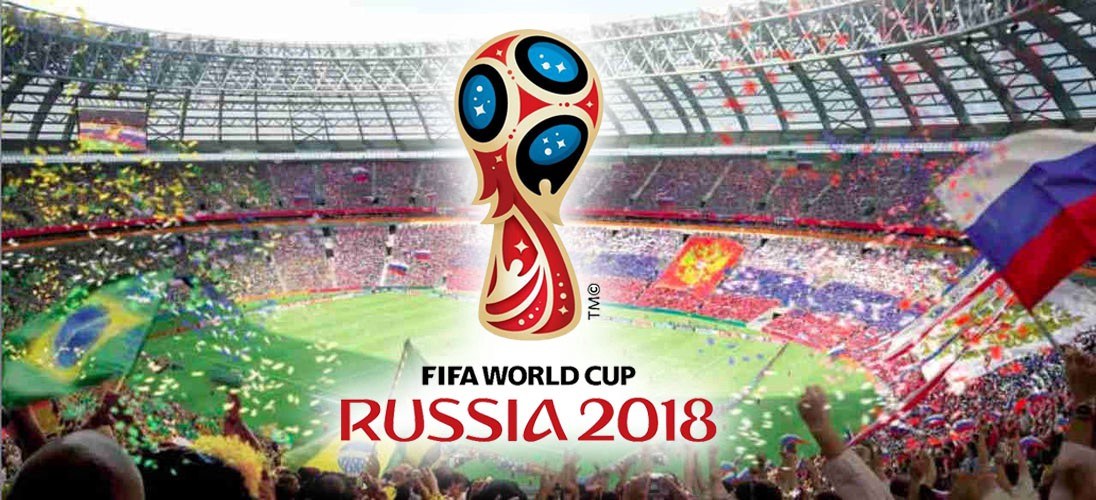Lineup for the quarter final of the 2018 FIFA World Cup has been decided and the World Cup Fever is at its peak. There is a lot to learn in real life from sports and it is through the watching and participation in sports, with our children, that has endless benefits for their well being and development. Research suggests that watching sports with your children can have great emotional and mental benefits too.
 Soccer is a beautiful game of skill, teamwork and strategy which captivates the attention of millions around the world. You may be surprised to know that there is lot of maths and science which goes behind every aspect of this fascinating game. We will share some such fascinating facts, so that when you are bonding with your child, rooting for your favorite team during the final stages of the tournament, you can also share some of these fascinating facts with your child.
Soccer is a beautiful game of skill, teamwork and strategy which captivates the attention of millions around the world. You may be surprised to know that there is lot of maths and science which goes behind every aspect of this fascinating game. We will share some such fascinating facts, so that when you are bonding with your child, rooting for your favorite team during the final stages of the tournament, you can also share some of these fascinating facts with your child.
Mathematics Behind the Soccer Ball
 The official soccer ball (as illustrated in the above picture) is made of a combination of 12 black pentagons and 20 white hexagons. Length of each side of the pentagon and hexagon is same to ensure that they fit together like a puzzle leaving no gaps between them. In mathematical terminology this is called Tessellation. If you are interested in knowing more about the math behind the soccer ball, you can refer: http://www.hoist-point.com/soccerball.htm. If you want to engage your child in making their own football out of paper, refer the attached youtube origami craft video https://www.youtube.com/watch?v=jfHzE3TtuaI
The official soccer ball (as illustrated in the above picture) is made of a combination of 12 black pentagons and 20 white hexagons. Length of each side of the pentagon and hexagon is same to ensure that they fit together like a puzzle leaving no gaps between them. In mathematical terminology this is called Tessellation. If you are interested in knowing more about the math behind the soccer ball, you can refer: http://www.hoist-point.com/soccerball.htm. If you want to engage your child in making their own football out of paper, refer the attached youtube origami craft video https://www.youtube.com/watch?v=jfHzE3TtuaI
Science Behind the Impossible Free Kicks
 Probably the most spectacular thing in soccer is seeing a player curving a soccer ball into the back of the net. Many fans almost automatically remember the Brazilian soccer player Roberto Carlos who in 1997 scored on a free kick that first went right and then curved sharply left. You would also remember the famous free kick from David Beckham, the famous England soccer player who scored on a free kick against Greece in 2001. So, how do soccer players do this? The answer lies to it in Magnus effect, a phenomenon that is commonly associated with a spinning object that drags air faster around one side, creating a difference in pressure that moves it in the direction of the lower-pressure side. A soccer ball is simply a projectile that is flying through the air with an initial velocity. The reason the ball curves is because the kicker kicks that ball at a certain angle and velocity. Once the ball is in the air, it is really the air that is curving the ball. Professional soccer players would usually kick the ball and add a little spin to it to neglect as much air resistance as possible. But in a free kick, which is usually 18 to 30 meters away from the goal, players would actually want air resistance because the air would curve and bend the ball in a way to trick the goal keeper. This all sounds easy but is extremely difficult. Players must hit the soccer ball with a precise velocity and with a particular spin. According to Bernoulli’s principles, air travels faster relative to the center of the ball where the periphery of the ball moves in the same direction as the air flow. In a normal kick, the ball would travel at roughly about 65mph. The ball would spin at around 10 revolutions per second. Once the ball travels about 10 meters, its speed would substantially drop and the drag would dramatically increase. Once the ball’s velocity drops the Magnus effect starts to increase. The Magnus effect is the reason the ball curves through the air. To know more about the magnus effect refer the Wikipedia link on the same https://en.wikipedia.org/wiki/Magnus_effect. There is a very interesting you tube video actually demonstrating the Magnus effect in football which you can also enjoy with your child https://www.youtube.com/watch?v=YIPO3W081Hw.
Probably the most spectacular thing in soccer is seeing a player curving a soccer ball into the back of the net. Many fans almost automatically remember the Brazilian soccer player Roberto Carlos who in 1997 scored on a free kick that first went right and then curved sharply left. You would also remember the famous free kick from David Beckham, the famous England soccer player who scored on a free kick against Greece in 2001. So, how do soccer players do this? The answer lies to it in Magnus effect, a phenomenon that is commonly associated with a spinning object that drags air faster around one side, creating a difference in pressure that moves it in the direction of the lower-pressure side. A soccer ball is simply a projectile that is flying through the air with an initial velocity. The reason the ball curves is because the kicker kicks that ball at a certain angle and velocity. Once the ball is in the air, it is really the air that is curving the ball. Professional soccer players would usually kick the ball and add a little spin to it to neglect as much air resistance as possible. But in a free kick, which is usually 18 to 30 meters away from the goal, players would actually want air resistance because the air would curve and bend the ball in a way to trick the goal keeper. This all sounds easy but is extremely difficult. Players must hit the soccer ball with a precise velocity and with a particular spin. According to Bernoulli’s principles, air travels faster relative to the center of the ball where the periphery of the ball moves in the same direction as the air flow. In a normal kick, the ball would travel at roughly about 65mph. The ball would spin at around 10 revolutions per second. Once the ball travels about 10 meters, its speed would substantially drop and the drag would dramatically increase. Once the ball’s velocity drops the Magnus effect starts to increase. The Magnus effect is the reason the ball curves through the air. To know more about the magnus effect refer the Wikipedia link on the same https://en.wikipedia.org/wiki/Magnus_effect. There is a very interesting you tube video actually demonstrating the Magnus effect in football which you can also enjoy with your child https://www.youtube.com/watch?v=YIPO3W081Hw.
Maths Behind the Soccer Pitch
- The football pitch is rectangular in shape which has a length of 90m-120m and a width of 45m-90m.
- However, a rectangle is not the only 2D shape visible on a football pitch. There are also circles and semi-circles and more rectangles.
- Each of the halves of the field, divided by the Half-way Line, is symmetrical. Symmetry of the field is important to make the game fair for all
- The Half-way Line is the diameter to the Centre Circle
- All Corners of the Soccer Field are right angles
- The two penalty kick spots in the goalie box and the Centre Spot from where the ball is kicked off are coplanar
- The opposite sidelines are parallel and the opposite endlines are parallel.
Importance of Geometry in Strategising the Game
Knowledge of angles and measurements helps a soccer player improve his game significantly and goes behind every aspect of soccer strategizing.
- Knowledge of angles help in improving the accuracy of the passes
 Goal keeper relies on angles to decide where he should stand when defending. In the diagram on the left in the picture below, the goalie is standing near the goal post giving the striker a wider angle to score the goal. In the diagram on the right in the picture below, the goalie has come out of the 6 yard box narrowing the angle for the striker to score the goal.
Goal keeper relies on angles to decide where he should stand when defending. In the diagram on the left in the picture below, the goalie is standing near the goal post giving the striker a wider angle to score the goal. In the diagram on the right in the picture below, the goalie has come out of the 6 yard box narrowing the angle for the striker to score the goal.- A striker also uses the knowledge of angles to improve their probability of scoring the goal
- Knowledge of trigonometry can be significantly useful while taking penalty kicks. The best spot to place a penalty is the top corner! So what angle would you kick the ball at to maximize your chances of scoring? Is it 30°, 45°, 77.2°?
- When you kick a soccer ball, it arcs up into the air and comes down again following the path of a parabola. Sometimes the objective is to hit the ball as far as possible. The objective is not achieved just by kicking the ball as hard as possible. Angle of the kick also plays a very important role in deciding the final distance which a ball can travel. Here is a link to a beautiful video explaining the math behind parabola https://study.com/academy/lesson/parabolic-path-definition-projectiles-quiz.html
So, next time you are watching this beautiful game of football, do engage your child into the fascinating maths and science behind the game.
Seriously Addictive Maths (S.A.M) is an after school math enrichment program for 3+ to 12 year olds based on teaching pedagogies of Singapore Maths, world’s best math program. If you would like to experience how we can help your child excel in maths, avail our offer of 2 weeks free trial by clicking the link http://www.seriouslyaddictivemaths.in/free_trial.php


